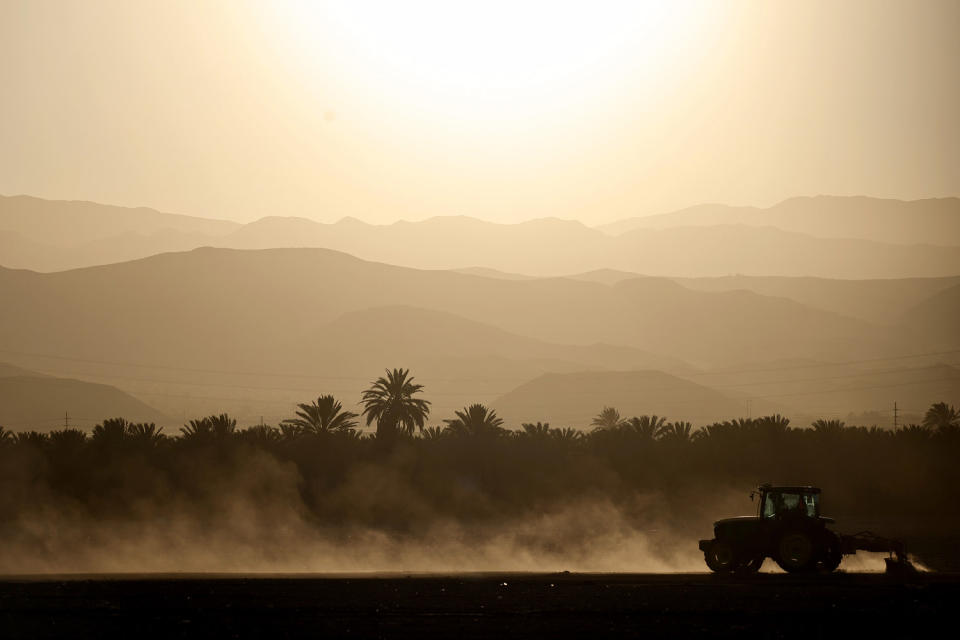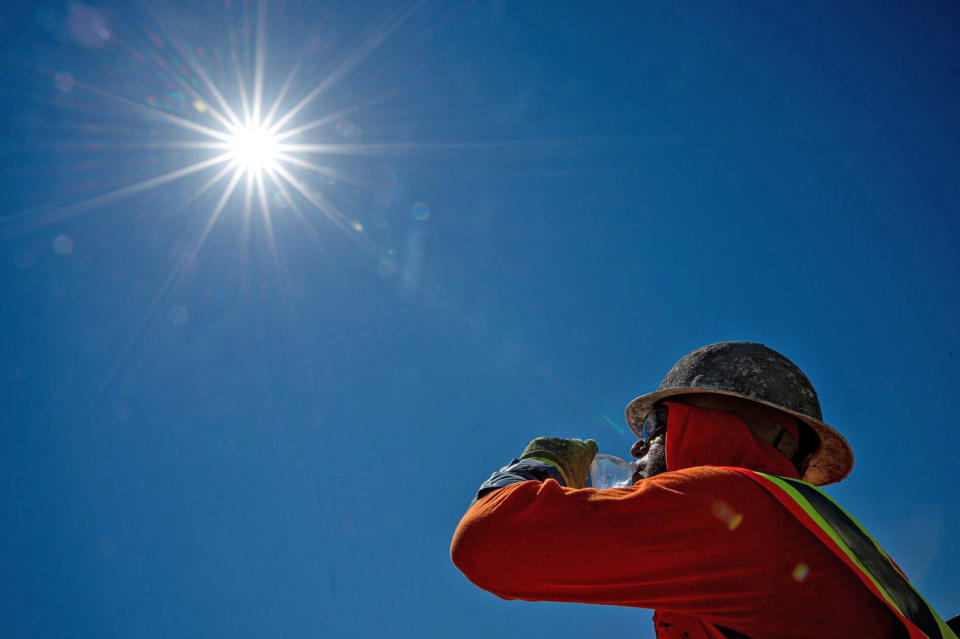A dangerous heat wave endangering people on the West Coast is expected to peak on Saturday, but experts say health risks will persist long after temperatures peak.
“Widespread temperature records are expected to be tied or broken. Saturday will likely be the hottest day in this heat wave, when high temperatures of up to 110 degrees will be common across California,” forecasters said in their national update Friday. “The duration of this heat is also concerning, as above-average scorching temperatures are forecast to last until next week.”
Heat builds up in people’s bodies over time, and the risk of a heart attack, heatstroke, or other medical illness generally increases over time. Some experts say medical risks from heat often accompany rising temperatures — but increase as days at risk increase.
“Typically you see deaths from heat waves not on the first day, but on the second and third days,” said Dr. Lisa Patel, an associate clinical professor who practices as a pediatrician at Stanford Medicine Children’s Health. “Cumulative heat is a major risk factor, especially for the elderly and for chronic health conditions.”

In this case, extreme heat is expected to persist for more than a week without interruption, damaging people’s resilience. The National Weather Service’s forecast on Friday called for record temperatures in California, Oregon and Washington on Saturday.
In areas like the Sacramento Valley, where the heat wave was concentrated, the National Weather Service issued warnings Tuesday morning at 11 a.m. These warnings will last until next Tuesday at least.
“Early next week there are hints of relief,” said Dakari Anderson, a meteorologist with the National Weather Service in California’s capital, adding that “relief will be a relative term” and temperatures could still be above 100 degrees in some parts. Of region.
In the US, heat is the leading cause of weather-related death. Its effects are sometimes underestimated in statistics because it often worsens underlying conditions such as heart, respiratory or kidney disease.


Daily Emergency Department Admissions for Heat-Related Illnesses Have Soared in recent days, according to data from the Centers for Disease Control and Prevention.
On July 4th, heat-related illnesses were responsible nearly 1.1% of all emergency department visits in a region that includes California, Arizona and Nevada. The rate of consultations for heat-related illnesses has more than doubled since July 1, the data shows.
A thermal hazard map, published jointly by the National Weather Service and the CDC, shows that some parts of California, including parts of the San Joaquin Valley, are expected to experience “extreme” conditions every day next week. The designation means that agencies expect impacts on healthcare facilities and infrastructure.
In Portland, Oregon, where temperatures are expected to rise above 100 degrees on Saturday, Dr. Richard Bruno, Multnomah County’s health officer, said he is concerned because Portlanders have had so few hot days this year and their bodies still they were not acclimatized to the heat. .
“I am particularly concerned about the thousands of people who will be attending music festivals and sporting events this weekend,” Bruno said in a press release. “They will spend a lot of time outside, may have little access to shade and water, and may not recognize the risk.”
death Valey it could reach 130 degrees on Sunday. These temperatures exceed the limits where some people can survive, even if they don’t have a specific chronic health condition, according to Jennifer Vanos, an associate professor at Arizona State University’s School of Sustainability.
Vanos, what studies the limits of human physiology in heat, built a model of survival thresholds that takes into account humidity, temperature, age and time. She said exposure to the types of conditions predicted for Death Valley on Sunday would likely cause death from heatstroke within six hours for an elderly person, even if they are inside a building or in the shade, assuming they have no access to air. conditioning.
Even in dry desert conditions, Vanos said, older people’s bodies simply can’t keep up with the cooling demands at those temperatures.
“We can’t sweat too much and the elderly even less,” Vanos said in an email.
This article was originally published in NBCNews. with


































